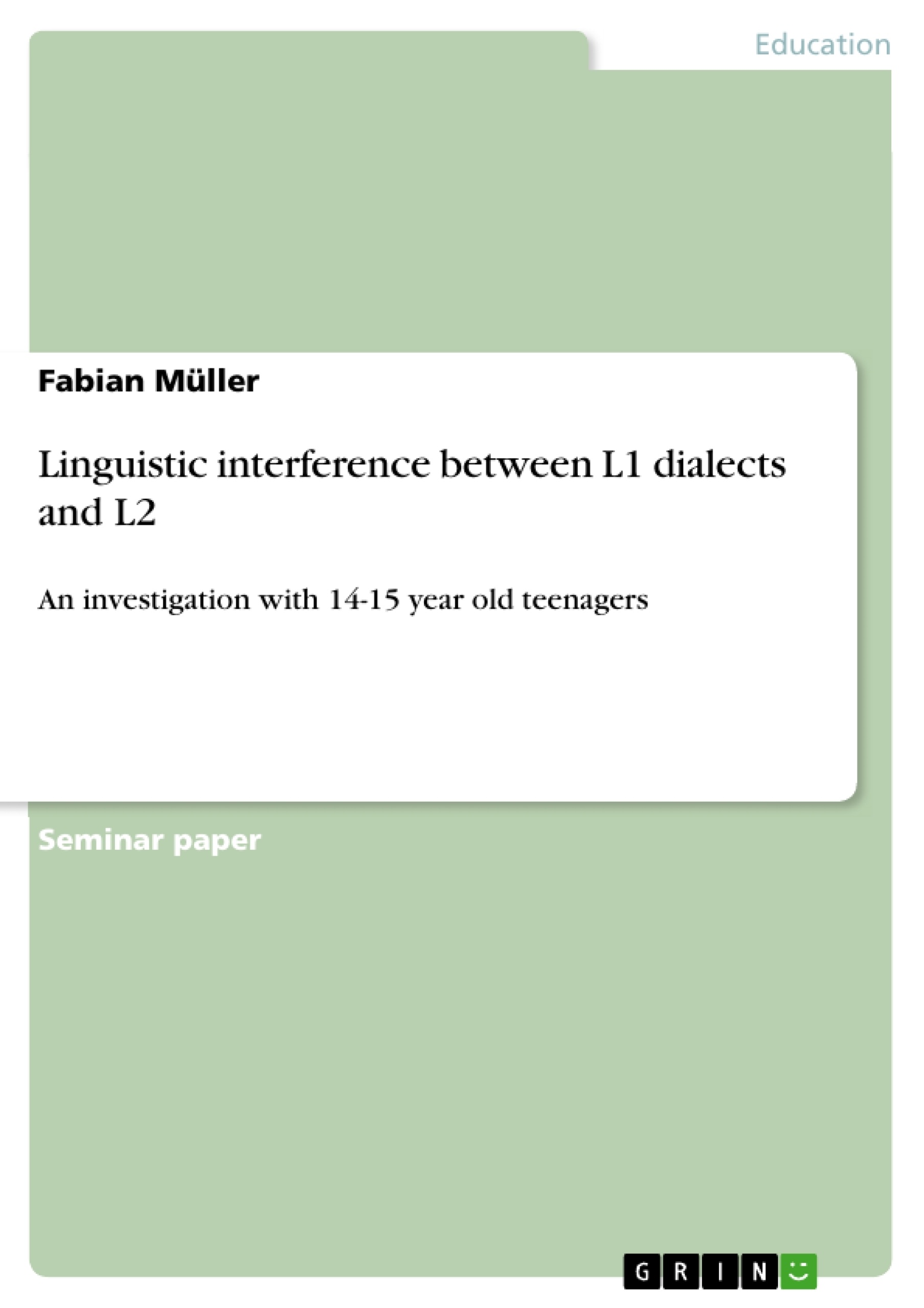"In present – day societies it is rare to find someone who speaks only one language; most people around the globe know and use several languages in their daily lives. Within this context, the mother tongue might have influence on the L2."
This academic paper is about the interference between German as L1 and English as L2 within a group 14-15 year-old teenagers. The main goal is to exemplify, whether the children's original dialects have any interference on their foreign language approach. It was tried to find participants, whose dialects give good examples for the region, they live in. Before the test and its results are described, some general information about L1 influences on L2 will be given.
Because the children, who participated in the test, were on a language trip to England while the test was taken, the basis for the research to this paper is the Recieved Pronuciation, although some of the students might have been in contact with other varieties of English before. To achieve more comparability, their English was only compared to the RP standard.
A difficulty during the research was to distingiush between varieties caused by their mother tongue and such caused by generell troubles in pronunciation. Therefore, the main focus was put on clear examples, such as voiced and devoiced sounds, aspiration and the [w, r] – sounds. All those examples can be looked at to find language interference between L1 and L2, whereas the θ/ð] – sound , which was analysed as well has to be looked at carefully. Many learners of English might have problems pronouncing that sound, but these problems are not neccessarily caused be their L1 dialect, but can be caused by the generell absence of the [θ/ð] – sound in the German language as their mother tongue.
There were different situations created in the test to find out, how students react, when they are just asked to read something out compared to the situation, when they have to speak freely and also, how their pronunciation changes, when they are asked to remember something and then repeat it after a few moments. The main reason, why those different situations were created, was that students might focus less on pronunciation, the more their attention is lead to something else. The more they are distracted, the more intuitive they react and the more they react intuitive, the more their original dialect is supposed to come out.
Inhaltsverzeichnis (Table of Contents)
- Introduction
- 1. linguistic interference...
- 2. test..
- 2.1 test procedure
- 2.2. test results
- 2.3. interpretation of the results
- 3. Conclusion
- 4. Bibliography.
- 5. Appendix...
Zielsetzung und Themenschwerpunkte (Objectives and Key Themes)
This academic paper explores the interference between German as L1 and English as L2 in a group of 14-15 year-old teenagers. The primary objective is to determine whether the participants' original dialects influence their foreign language approach. The paper examines the influence of L1 dialects on L2 pronunciation, specifically focusing on sounds like voiced and devoiced sounds, aspiration, and the [w, r] - sounds.
- Linguistic interference between L1 dialects and L2
- Influence of L1 pronunciation on L2 acquisition
- Impact of different test situations on pronunciation accuracy
- Analysis of specific phonological features and their interference
- Distinguishing between L1-related and general pronunciation difficulties
Zusammenfassung der Kapitel (Chapter Summaries)
- Introduction: The chapter introduces the topic of linguistic interference, particularly focusing on the potential impact of L1 dialects on L2 acquisition. It establishes the research context, outlining the main goals and the specific group of participants. The chapter also discusses the importance of Received Pronunciation as the target standard and the challenges of distinguishing between dialect-specific and general pronunciation difficulties.
- 1. linguistic interference: This chapter provides a theoretical background on linguistic interference, drawing on the field of contrastive linguistics. It explains the basic assumptions of contrastive linguistics, emphasizing the role of positive and negative transfer. The chapter discusses the significance of L1 sound systems and their potential impact on L2 pronunciation.
- 2. test: This chapter details the test procedure and its rationale, explaining how different test situations were designed to assess the impact of L1 influence on L2 pronunciation. It provides information on the test materials, the types of tasks, and the specific areas of pronunciation targeted in the study.
Schlüsselwörter (Keywords)
The key terms and concepts explored in this paper include linguistic interference, contrastive linguistics, L1 influence on L2, pronunciation accuracy, dialectal variation, Received Pronunciation (RP), phonological features, and test methodology.
- Citar trabajo
- Fabian Müller (Autor), 2012, Linguistic interference between L1 dialects and L2, Múnich, GRIN Verlag, https://www.grin.com/document/268415



